Karwa Chauth, 10 Oct 2025: Significance & Puja Details
Karwa Chauth is an important Hindu festival where married women fast & perform rituals so that their husbands are blessed with a long life. ‘Karwa’ stands for the pot through which women offer water to the Moon as part of the ritual & ‘Chauth’ means fourth. This festival also stands for change in season & coincides with Sankashti Chaturthi, a fasting day observed for Lord Ganesha.
Karwa Cauth is a one-day festival which is widely celebrated in northern India. Married women observe fast from sunrise till moonrise and pray for the well-being and longevity of their husbands. This festival can also be observed by unmarried women who pray in the hope of securing a desired life partner.
It falls on the fourth day of the dark fortnight (Krishna Paksh or the wanning phase of the moon). ‘Karva’ means an earthen pot with a spout and ‘Chauth’ means fourth. The ‘karwa’ or earthen pot is significant as it represents the pot or vessel through which women offer water (‘jal’) to the Moon as part of the ritual. This festival also stands for change in season, the end of the harvesting season.
How is the festival celebrated in Punjab?
In Punjab, married women wake up before sunrise and get ready. A night before Karwa Chauth, the woman’s mother sends ‘Bayaa’ which consists of clothes, coconut, sweets, fruits, and vermillion (sindoor) for her daughter is supposed to have the ‘Sargi’ (a meal consumed before sunrise on the day of Karva Chauth).
This ‘sargi’ is given to her by her mother-in-law and includes fresh and dry fruits, chapatis, vegetables, and sweets. As the puja time nears, women come together with their respective ‘thalis’ (a large plate) that contains coconut, fruits, dry fruits, a ‘diya’ (lamp), a glass of ‘kachi lassi’ (a drink made of milk and water), sweets, mathri (a savoury), and gifts which are to be given to the mother-in-law. The ‘thali’ is covered by a cloth.
The women then come together and sit circling the idol of Gauri Maa (Goddess Parvati) and the story of Karva Chauth is narrated by an elderly woman who also ensures that the pooja is performed in the correct manner. Then the women start to rotate the ‘thalis’ around the circle.
This is called ‘Thali batana’. This ritual is performed seven times by singing the Karwa Chauth song. The song highlights the precautions which need to be taken while women observe the fast.
After the puja, women touch the feet of their mother-in-law and gift them dry fruits as a symbol of respect. The fats is broken when the Moon appears in the sky. They carry a sieve and a puja thali which comprises ‘diya’, wheat flour, sweets and a glass of water.
They look at the moon through the sieve and offer buttermilk to the Moon and recite the following prayer, ‘Sir Dhadi, Paer Kadi, Ark Dendi, Sarv Suhagan, Chaubare Khadi….’ After this, the husband feeds the same buttermilk and sweets to his wife, who touches the feet of her husband. Both of them take blessings from elderly people and then break the fast. The dinner is prepared with ‘sabut dal’ like red beans, green pulses, pooris (fried bread), rice, and sweets from the ‘Bayaa’.
Vedic Astrology prescribes predictions based on Moon Sign for more accuracy. Do not know your Moon Sign? Find out instantly for FREE by filling the form below!
How is the festival celebrated in Uttar Pradesh?
Here, the ‘Sargi’ comprises of ‘feni’ (vermicelli) which is dipped in sweet milk, a plate full of sweets and savories, coconut, dry fruits, ‘fara’ (steamed lentils dumplings) and gifts such as traditional Indian wear and jewelry. Most important gifts for a married woman includes toe rings, anklets, glass bangles, vermillion, bindi / tikka, and ‘alta’ (red paint which is applied on feet). Women also apply ‘mehendi’ (henna) on their hands.
The ceremony begins before moonrise, the women are fully decked up for the festival, they sing songs, exchange thalis in a circle, and offer prayers to Goddess Parvati. The mother-in-law blesses the daughter-in-law and exchanges ‘karwa’ (pot) with her.
In some places, they draw a face of the Moon with rice paste on the ground and recite prayers while offering ‘kumkum’ (made of turmeric and other materials), rice, flowers, and sweets. After this, they offer water through their ‘karwa’ seven times while chanting prayers.
The story behind Karwa Chauth
Once upon a time, there was a beautiful queen named Veervati, the only sister to seven loving and caring brothers. After her marriage she observed her first Karwa Chauth fast. Her brothers were very disturbed by seeing Veervati undertake the rigors of fasting and desperately waited for the moon to rise. Finally, they created a mirror-like image with the help of fire, through Pipal tree leaves, and asked her sister to break the fast.
Veervati asked her brothers’ wives to break the fast as well. But they told her that her brothers were deceiving her, the moon had not risen yet. Veervati didn’t take their words seriously and broke the fast. The moment she had food. she received a few bad omens.
On the first bite, she found hair, with the second bite she sneezed and on the third bite she got the news that her husband was dead. On seeing the dead body of her husband, she started feeling guilty and blamed herself for the death. She started mourning.
At this, Devi Indrani, the wife of Lord Indra came to console Veervati, who pleaded the Devi to bring her husband back to life. But the Devi told her that she had broken the fast on Karwa Chauth without ‘argha’ (an offering) to the Moon, due to which her husband had an untimely death.
Indrani advised Veervati to observe Chauth fast throughout the year and include Karwa Chauth fast to get her husband back. Veervati did as the Devi said. Finally, after accumulating ‘punya karma’ (good karma) by observing fast, Veervati got her husband back.
Karwa Chauth Puja Details
Date: Karwa Chauth is on 10th October 2025
Puja Timing: 5:57 PM to 7:11 PM
Karwa Chauth coincides with Sankashti Chaturthi, a fasting day for Lord Ganesha. During Karwa Chauth, Lord Shiva and Goddess Parvati (who is considered ‘Nitya Sumangali’ - a woman who is eternally free from widowhood) along with Lord Ganesha and Lord Kartikeya are worshipped. Sankashti Chaturthi is also known as the day that eliminates all evil.
Method to perform the Puja
After taking bath, women should take ‘sankalp’ (pledge) that she is keeping this fast for the well-being of her husband and family members. It is also intended that the fast will be observed without consuming food and water, and food will be taken only after seeing the Moon.
Recite the following mantras (scared verses) while taking the sankalp:
‘I would observe the fast of Karak Chaturthi for the well-being of the husband, sons and grandsons and to gain fixed wealth.’
(Women either draw Gauri Ma or Chauth Ma’s picture on the wall or use the Chauth Ma image from the printed Karwa Chauth puja calendar. Both Goddesses represent Goddess Parvati.)
‘O beloved consort of Lord Shiva, please bestow long life of the husband and beautiful sons to your women devotees.’
(After Goddess Gauri, Lord Shiva, Lord Kartikeya, and Lord Ganesha are worshipped.)
‘O milk filled karwa with precious stones; I donate you, so that my husband is lives long.’
(After the puja, women should wait for the Moon to rise and break the fast after ‘argha’ (offering).
Thereafter, the ‘karwa’ should be filled with water or milk or precious stones and coins should be donated to a brahmin or married woman.
.jpg)
Detailed Life Reading
The Detailed Life Reading is prepared using Vedic predictive means and for this your birth chart is analysed with a deep analysis of the dasa system and all planetary transits during the relevant period. more
2026 Horoscope Reports
Translate
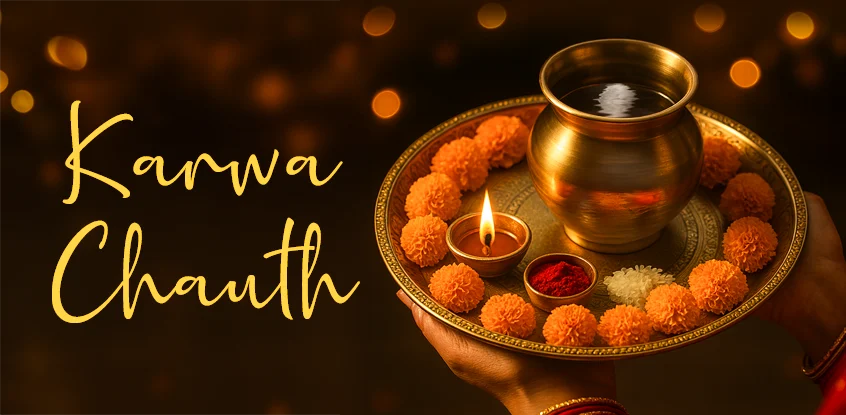
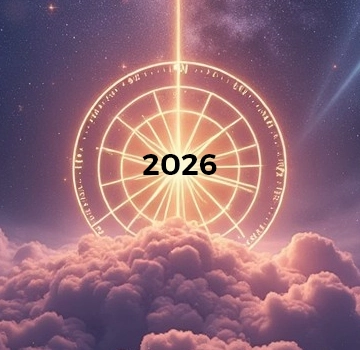

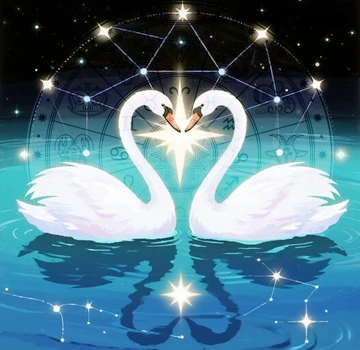

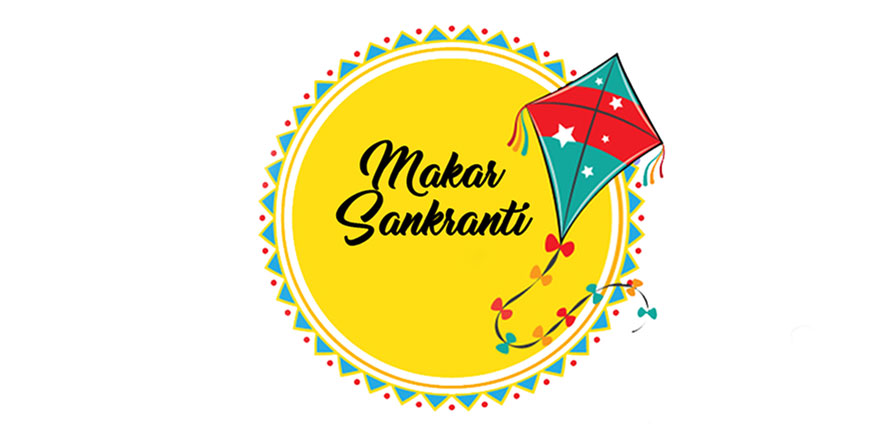 Makar Sankranti (15 Jan 2024): Significance & Auspicious Time
Makar Sankranti (15 Jan 2024): Significance & Auspicious Time
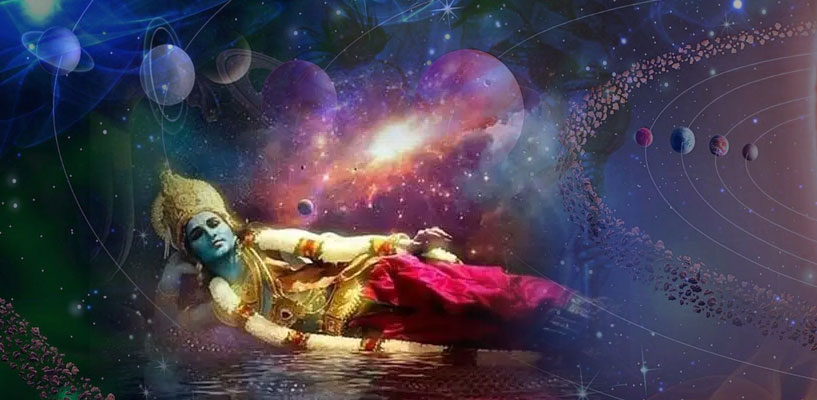 Adhik Maas - Spiritually The Most Powerful and Religious Month!
Adhik Maas - Spiritually The Most Powerful and Religious Month!
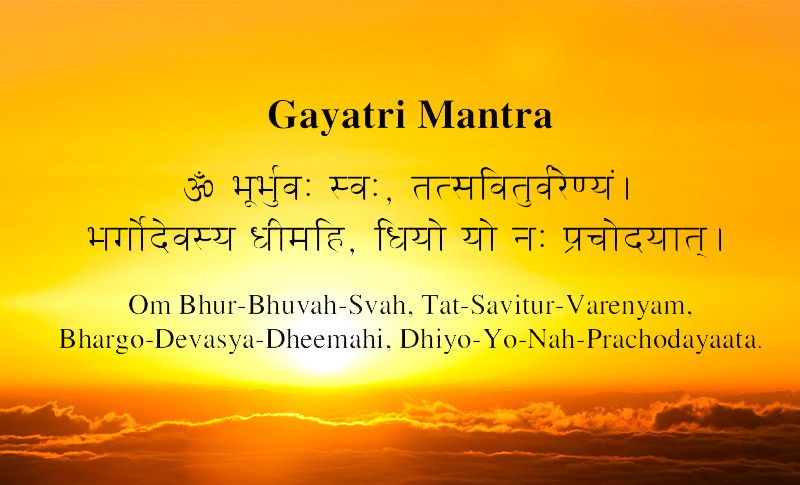 Gayatri Mantra: The Golden Hymn
Gayatri Mantra: The Golden Hymn
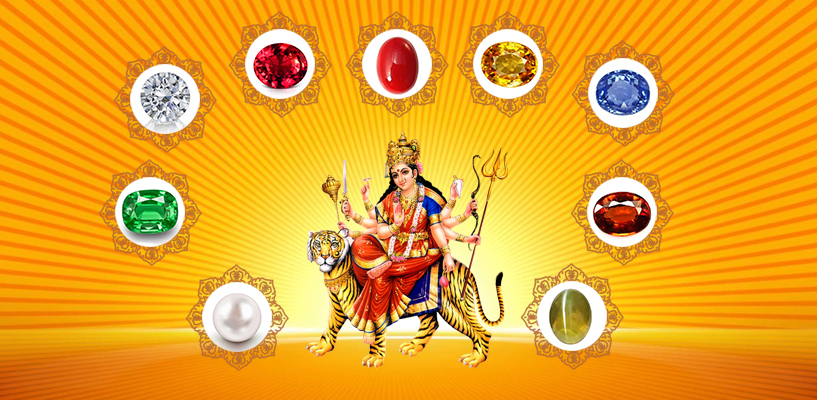 The Auspicious Nine Gemstones For the Divine Nine Deities of Navratri
The Auspicious Nine Gemstones For the Divine Nine Deities of Navratri
 Recommendations for Designing your Prayer Room
Recommendations for Designing your Prayer Room
